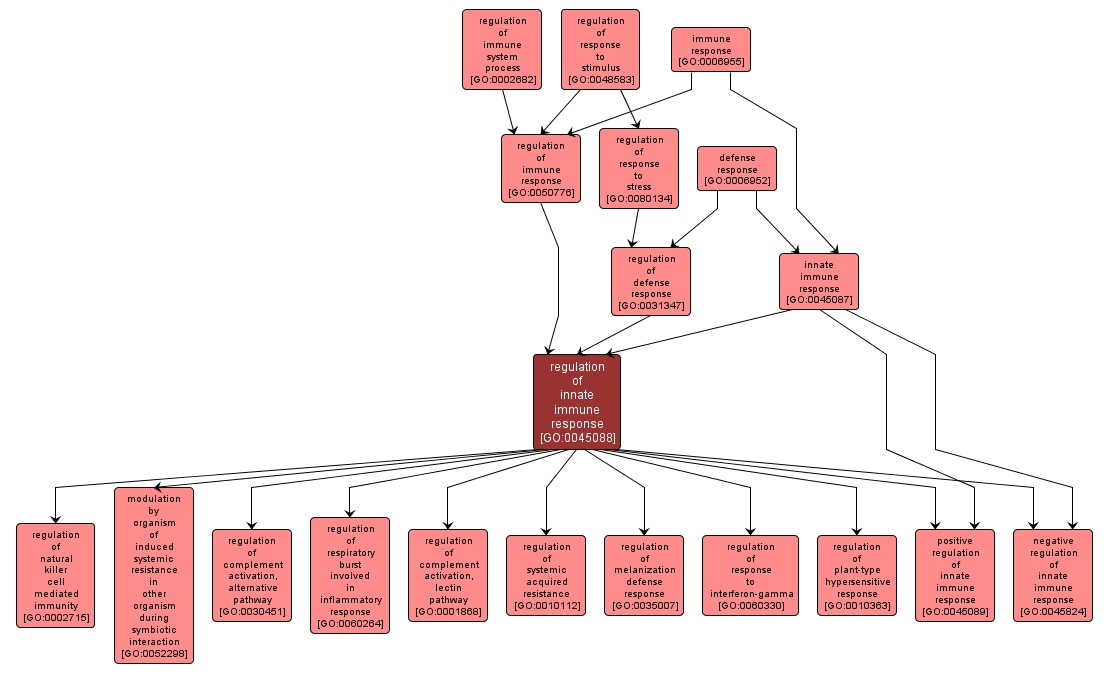GO TERM SUMMARY
|
| Name: |
regulation of innate immune response |
| Acc: |
GO:0045088 |
| Aspect: |
Biological Process |
| Desc: |
Any process that modulates the frequency, rate or extent of the innate immune response, the organism's first line of defense against infection. |
|

|
INTERACTIVE GO GRAPH
|














